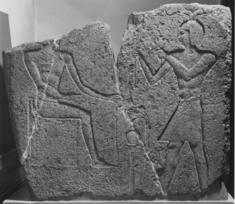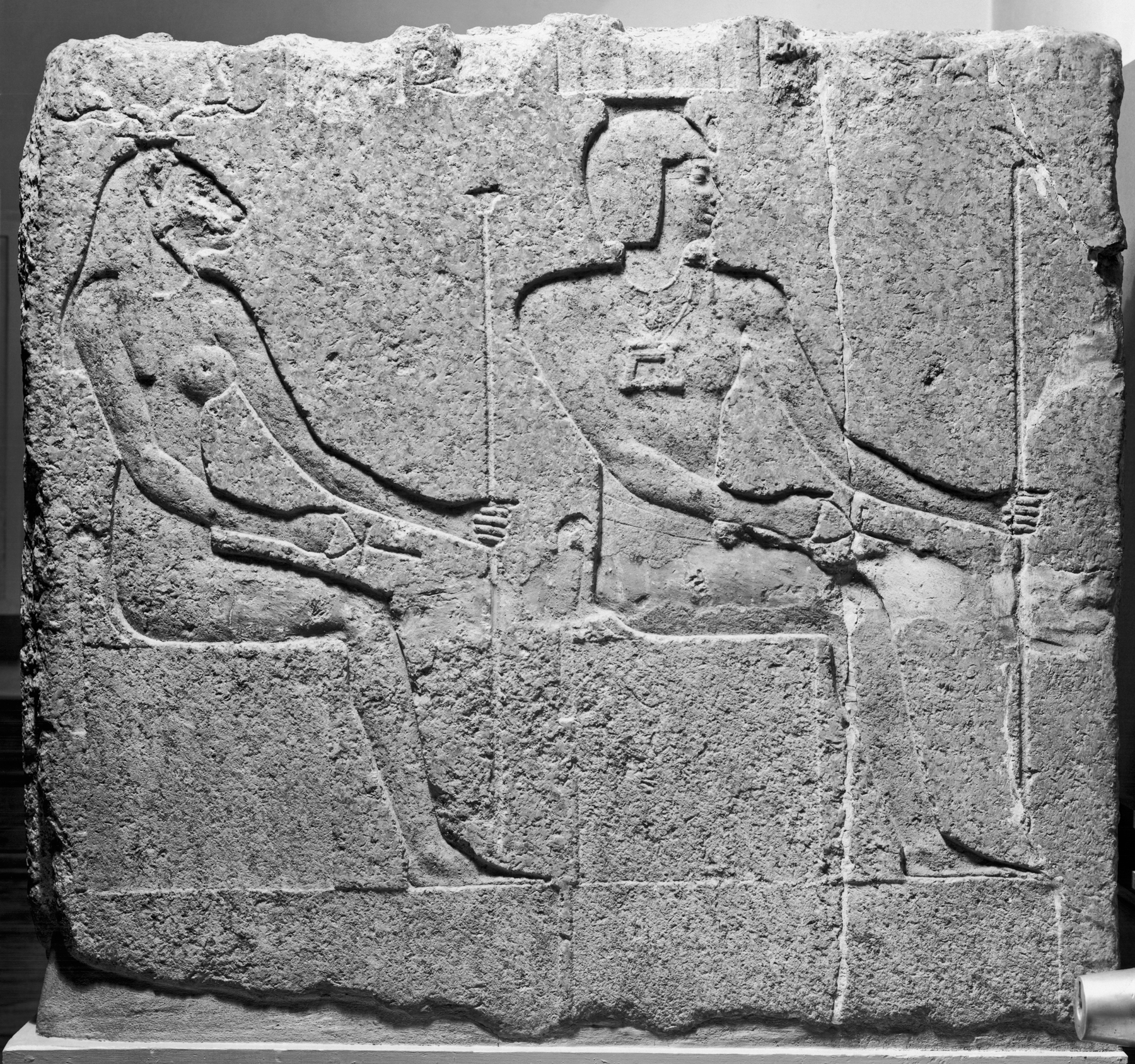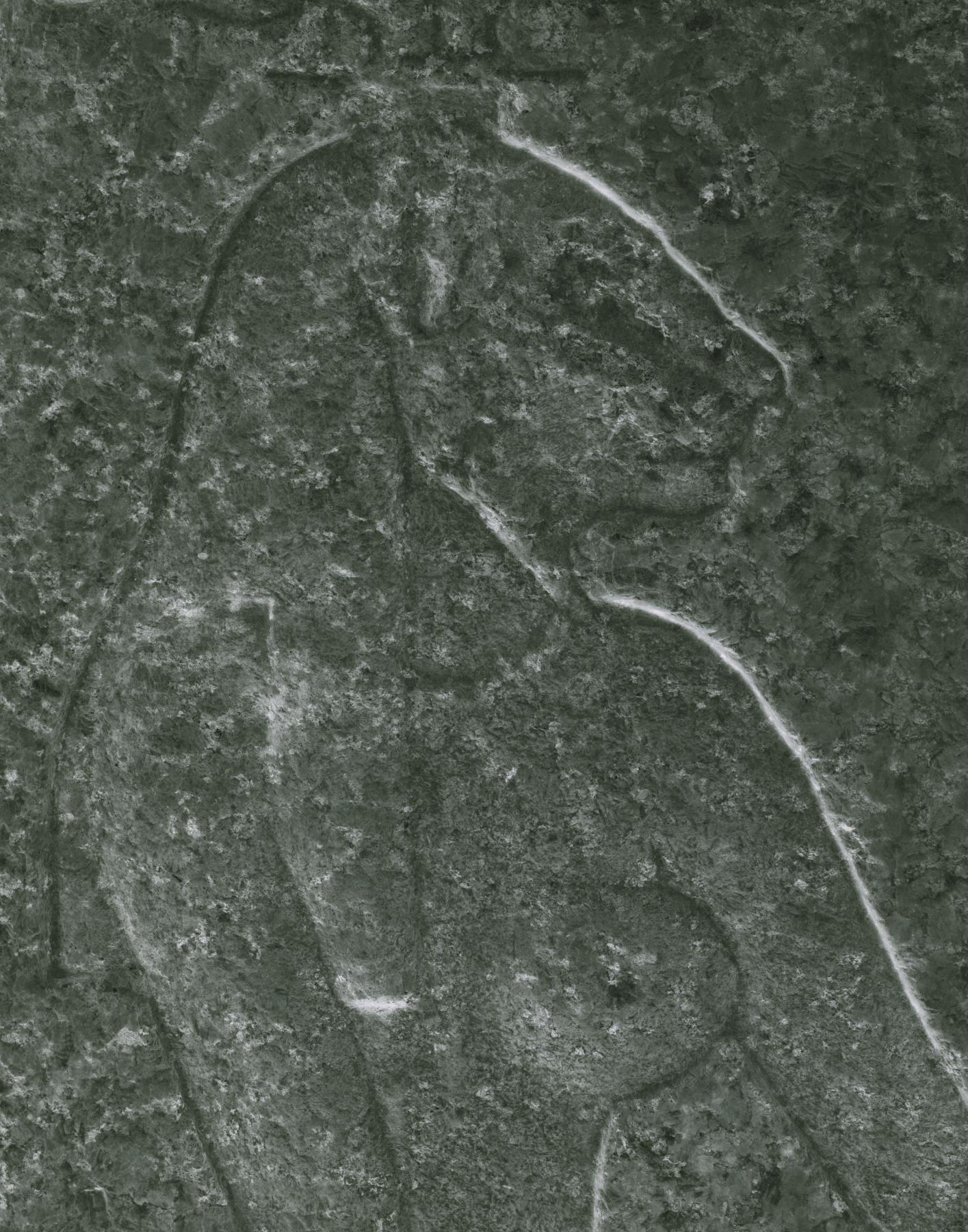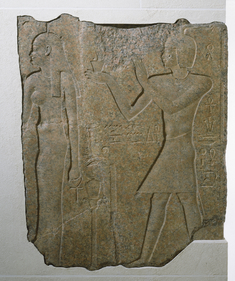Corner Relief Fragment with King Ptolemy II Philadelphos, Mehyet, and Onuris-Shu
(Ancient Egypt and Nubia )
The patron deities of ancient Samannud, the war and air god Onuris-Shu and his lioness-headed mate, Mehyet, are shown enthroned on the outer face of this block. Originally, a king would have stood before them presenting offerings. Both gods hold an ankh (life symbol) and a scepter: his is the was scepter (symbolizing prosperity and dominion), hers is a papyrus scepter. On the inner face of the block, a king presents a floral offering to the divine couple, but only part of Onuris-Shu's figure remains.
Provenance
Provenance (from the French provenir, 'to come from/forth') is the chronology of the ownership, custody, or location of a historical object. Learn more about provenance at the Walters.
Henry Walters, Baltimore, [date and mode of acquisition unknown]; Walters Art Museum, 1931, by bequest.
Conservation
| Date | Description | Narrative |
|---|---|---|
| 9/6/1951 | Treatment | other |
| 7/15/1959 | Treatment | cleaned; loss compensation |
| 7/20/1970 | Treatment | cleaned |
| 10/1/1998 | Examination | examined for exhibition |
| 1/30/2001 | Treatment | re-housed; stabilized |
Geographies
Egypt, Samannud (Sebennytos) (Place of Origin)
Measurements
H: 36 9/16 x W: 39 1/2 x D: 39 1/2 in. (92.8 x 100.4 x 100.4 cm)
Credit Line
Acquired by Henry Walters
Location in Museum
Accession Number
In libraries, galleries, museums, and archives, an accession number is a unique identifier assigned to each object in the collection.
In libraries, galleries, museums, and archives, an accession number is a unique identifier assigned to each object in the collection.
22.5
Do you have additional information?
Related Objects
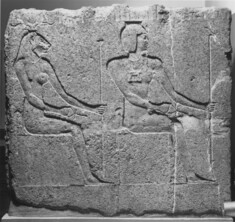
Corner Relief Fragment with King Ptolemy II Philadelphos, Mehyet, and Onuris-Shu
